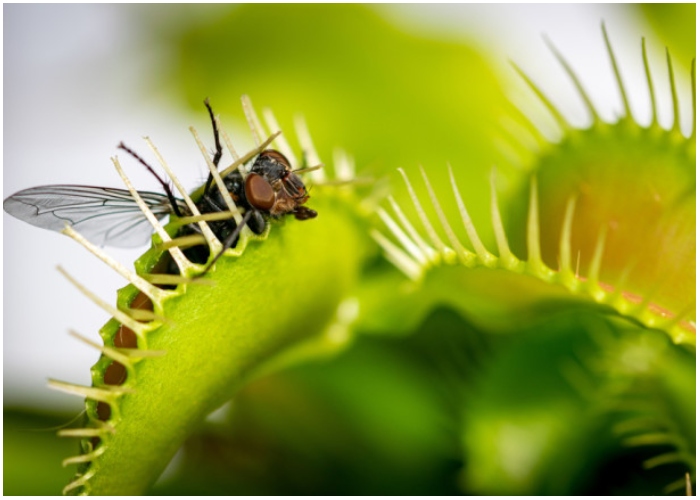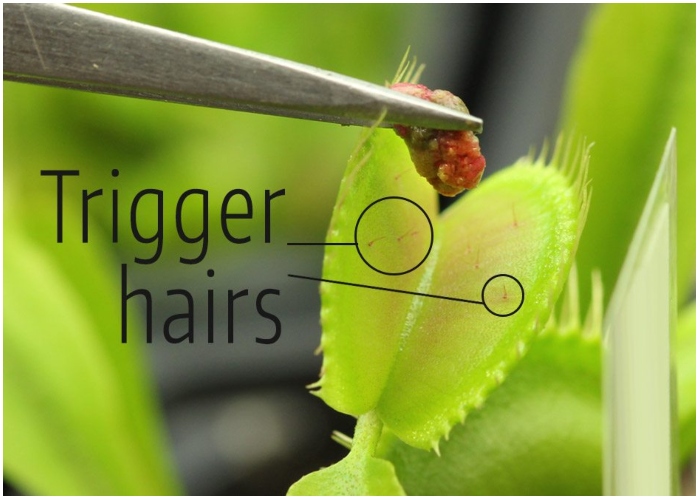The Venus flytrap (Dionaea muscipula) is one of the most fascinating plants in the botanical world, known for its unique method of feeding. Unlike other plants that passively absorb sunlight and nutrients from the soil, the Venus flytrap actively captures and digests insects. This remarkable adaptation makes it a standout among both garden enthusiasts and botanists.

Native Habitat and Characteristics
The Venus flytrap is native to the coastal plains of North and South Carolina in the United States. It thrives in the acidic, nutrient-poor soils of these regions, which has led to its unique evolutionary path of carnivory to obtain necessary nutrients like nitrogen and phosphorus. The plant is perennial and can live over 20 years in the wild but is often grown as an intriguing houseplant.
How the Venus Flytrap Feeds
Capturing Prey
The Venus flytrap catches its prey using modified leaves that form a snapping trap. The inner surfaces of these traps have hair-like structures called trichomes. When an unsuspecting insect touches these hairs twice in rapid succession, it triggers the trap to snap shut, capturing the insect inside.
Digestive Process
Once closed, the trap’s edges seal together to form an airtight space where digestion occurs. Digestive enzymes are released to break down the insect’s soft parts, allowing the plant to absorb the nutrients. This process can take five to 12 days, depending on the size and type of the insect, after which the trap reopens to discard the insect’s exoskeleton.
Longevity of Traps
Each trap on a Venus flytrap can only operate a limited number of times. During its lifetime, it typically captures three to five meals before it ceases to function and eventually falls off. Unsuccessful triggers, such as those caused by non-prey items or even accidental touches, can cause traps to fatigue and die prematurely.

Feeding a Venus Flytrap
What to Feed
In their natural habitat, Venus flytraps don’t require human intervention to find food. They naturally capture whatever insects wander too close. For houseplants, however, owners can feed them small live insects like ants, flies, and gnats. Larger traps may handle bigger prey like grasshoppers and beetles. It’s important to use live insects to ensure the traps close completely and digestion occurs.
When and How to Feed
Feeding frequency depends on the number of active traps a plant has. During active growth periods, it’s beneficial for at least one trap to be digesting at all times. The use of tweezers to place and stimulate prey inside the trap can mimic natural conditions and promote healthy feeding behavior.
FAQs
Can You Feed a Venus Flytrap Dead Bugs?
No, feeding dead bugs to a Venus flytrap is not recommended. Dead insects won’t trigger the mechanical reaction needed to close the trap and start the digestion process. The trap might close partially but will reopen shortly after without digesting the prey.
Will a Venus Flytrap Survive Without Eating Bugs?
While Venus flytraps can perform photosynthesis like other plants, they rely on the nutrients from bugs to thrive, especially given their nutrient-poor native soil. They can survive for a time without insects but will not thrive and grow as they would with regular feedings.
Can Venus Flytraps Eat Fruit?
Feeding fruit to a Venus flytrap is not advisable. The sugars in fruit can cause the plant to rot, and like with dead insects, the trap may not close properly around non-insect food items, leading to decay and potential health issues for the plant.
The Venus flytrap remains one of the most interesting plant species due to its carnivorous lifestyle and distinctive feeding mechanism. Proper care and understanding of its dietary needs can make growing this plant a rewarding and educational experience.